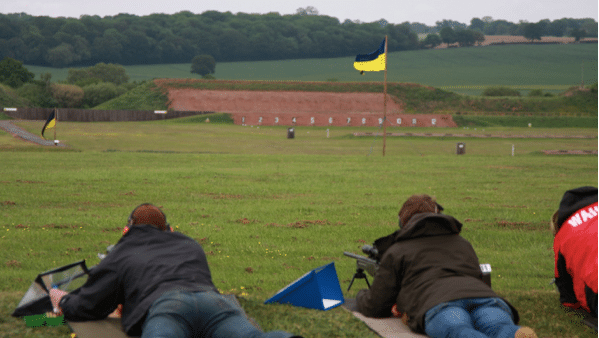Home Office Public Consultation – Firearms Safety Guidance

National Rifle Association
Home Office Public Consultation – Firearms Safety Guidance to NRA Members and Affiliates December 2020
NRA members, affiliates and the wider shooting community are encouraged to respond to the Public Consultation on Firearms Safety found at https://www.gov.uk/government/consultations/firearms-safety
Our opinions and arguments will be persuasive if made by large numbers of sensible voices – do not leave it to others to have your views heard – deadline 16th February 2021.
BACKGROUND
The Government, whilst recognising that UK firearms laws are among the toughest in the world, is seeking the views of the shooting community and wider public on four substantive issues, namely:-
- High Muzzle Energy rifles (over 10,000 ft-lbs / 13,600J – not to be confused with the limit of the same name but of 4500J-7000J imposed on military gallery ranges) – enhanced security for .50” calibre and similar rifles
- Air Weapons – use by young people and safe storage
- Miniature Rifle Ranges – licensing of operators for rifles and ammunition
- Ammunition Components – reducing the risk of criminal assembly of ammunition
Having consulted with other shooting organisations, we have set out below the key points that you may wish to include in your response.
HIGH MUZZLE ENERGY (HME) RIFLES
Firearm security
The Firearms Security Handbook describes three broad levels of security. The Handbook says they are not intended to be prescriptive, but rather to provide guidance on what might be considered proportionate in each case.
Level 3 security
In the case of most certificate holders, security to levels 1 or 2 is appropriate. However, if the risk is assessed as being greater due to additional factors such as higher crime rate, increased risk of burglary, or a large number of firearms held, then the Handbook indicates that “the following should be considered as well as the previous level of security: a) Dividing the risk, for example by the provision of separate cabinets, perhaps in different locations within the premises, to break down the number of firearms per enclosure. b) Additional target hardening of the storage (cabinet with individual gun locks, or extending to a gun room). c) Protected by an intruder alarm or equivalent and ideally monitored by a NSI monitoring centre with an appropriate response.”
For HME rifles, it is appropriate that that security requirements are proportionate, not overly prescriptive and reflect the individual circumstances of each case. Therefore elements of level 3 security may be considered for those with HME rifles.
The Consultation asks for views about certain additional security requirements. Our view on these is as follows:
- A requirement for shutters, grilles and CCTV would place an unreasonable cost burden upon certificate holders. It may be impractical in conservation areas or listed buildings and would potentially draw attention to a property as potentially containing items worth stealing.
- Panic alarms are impractical on the remote ranges where HME rifle users operate; nearly every shooter has a mobile phone.
- It is reasonable that a critical component such as the bolt or breechblock should be kept separately from the receiver of the rifle, both in storage and transport. Given that separation of the critical components renders the firearm non-functional and that the risk being mitigated is that of criminal misuse, such separation is significant mitigation.
- It is unreasonable and impractical for parts of a certificate holder’s rifle to be stored by other club members or by an RFD. That would necessitate components having to be retrieved possibly several days before a shoot, perhaps only during RFD opening hours, returned afterwards and stored at the certificate holder’s premises in the interim.
- It is reasonable that ammunition should be kept in a separate secure cabinet from the rifle. The amount of ammunition that a certificate holder can possess is already restricted.
- The ranges used in long range target shooting with .50” calibre and other HME rifles are typically in remote locations, where facilities for storage of rifles are not available. Were such facilities to be developed on site, the firearms would be stored in a remote, unmanned place rendering them potentially far more vulnerable to theft.
AIR WEAPONS
Airgun shooting is one of the most popular shooting activities in the UK. Both professional and amateur pest controllers commonly use airguns, mainly due to their quiet operation and the low cost of ammunition. Airguns are also used for both recreational and formal target shooting, the latter to Olympic level. The UK boasts World and European champions in almost all airgun target shooting disciplines. Airgun shooting is also the perfect introduction for young people into the sport of shooting, where all the basic principles – including safety – can be taught at low cost and with only minimal space and protective measures. Many of today’s shooters started their shooting career with an airgun.
Use of airguns by young people
- The law on airguns and young people is already strict and was carefully considered by Parliament when age limits were amended in 2003. Those aged 14-17 may only borrow an airgun for unsupervised use on private premises where they have permission to shoot.
- A person under 18 may not buy an airgun or be given one as a gift.
- They (and any persons) commit an offence if they fire a pellet beyond the boundary of the property where they have permission.
- They cannot carry an airgun in a public place unless supervised by someone aged 21 or over.
We feel that the present law is adequate but that it should be better enforced.
Airgun safety
All firearms, including airguns, must be stored securely, and we agree that when young people under 18 are on the premises airguns should be:
- Locked to prevent use, for example in a secure cupboard, by having a trigger lock or securicord fitted, and
- Kept out of sight
We agree that the Government should work with airgun manufacturers and the gun trade to improve airgun safety.
MINIATURE RIFLE RANGES
The law currently allows people operating a ‘miniature rifle range’ to acquire and possess rifles and ammunition less than .23 inches in calibre without holding a Firearm Certificate. It also allows people to use rifles on such a range without holding a Firearm Certificate. This exemption (Firearms Act 1968 S11(4)) provides a valuable opportunity for introduction into the sport of shooting for Scouts, Cadets, youth organisations, schools, colleges and universities as well as the wider public via Home Office approved clubs, clubs operating exclusively under the exemption and small businesses which operate commercial ranges. The Government is supportive of these aspects of the exemption; that is welcome.
However, we recognise concerns that a person who does not hold a Firearm Certificate, and thus has neither been vetted nor placed under legal obligation, may purchase or acquire or possess small calibre (typically .22RF) rifles and ammunition.
We agree that the operator of a miniature rifle range should hold a Firearm Certificate in order to purchase, acquire and possess firearms and ammunition. That would ensure that they were subject to the same checks as other firearm owners and that they could be held responsible for the security of the firearms and ammunition. We do not agree that the person running such a range under the direction of the operator should also be required to hold a Firearm Certificate.
- Miniature rifle ranges have traditionally used .22 rimfire rifles. We agree that this should remain the case and would be content for that to be enshrined in legislation provided that lesser-powered firearms (eg air pistols and air rifles) were not accidentally excluded.
- Self-loading .22 rimfire rifles are widely used in competition, as well as for other purposes such as pest control. We contend that they should continue to be considered ‘miniature rifles’ for the purposes of this provision.
AMMUNITION COMPONENTS
Large numbers of full bore target shooters load centre fire ammunition. They do so to save costs, improve accuracy and provide a source of ammunition (for example for vintage or historic firearms) that is not commercially available. Viable ammunition requires both a primer and a propellant, and these are already controlled. Primers for metallic cartridges and primed cases may only be acquired on presentation of a Firearm Certificate. An explosives licence is necessary in order to acquire and keep black powder. Smokeless powders are controlled under Explosives Regulations 2014 for acquisition by certificate or permit holders only.
Assembled ammunition may only be possessed with a suitably conditioned Firearm Certificate. Any ammunition loaded must conform to the calibre and quantity specified on the Firearm Certificate and cartridges must be stored securely to prevent access to them by unauthorised persons.
Shooters who hold the relevant valid certificates, permits and licences, and load ammunition authorised by their certificates do not commit an offence. However, inert components of ammunition such as cartridge cases, bullets, shot or wads, are not controlled and are possessed by many people. That possession may be entirely unconnected with shooting activities; empty cases and inert items consisting of an unprimed case with a bullet inserted are routinely incorporated in ammunition collections, clothing, souvenirs and works of art.
- Any legislation designed to criminalise those with intent to manufacture unauthorised ammunition must be drafted in such a way that it does not inadvertently criminalise those who lawfully possess ammunition or component parts of it, or who intend to manufacture authorised rounds. In particular, simple possession by such a person of components sufficient to assemble ammunition in excess of the limit of their certificate should be explicitly excluded from the definition of “intent” in any legislation.
- Any such legislation should apply only in cases where a person possesses all the necessary components and has criminal intent.
Andrew Mercer
Secretary General


Published on:
Dec 18, 2020
Share